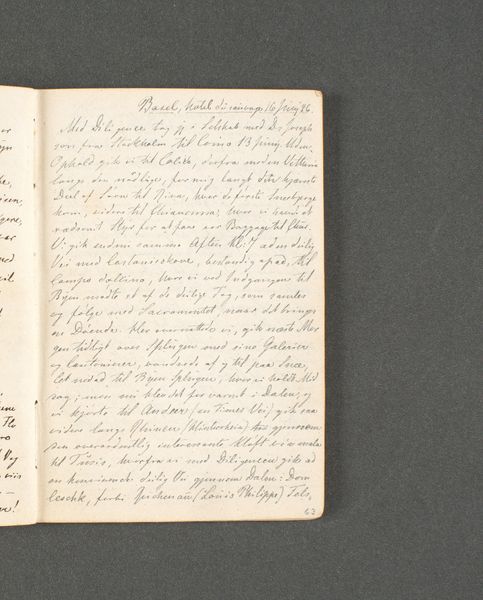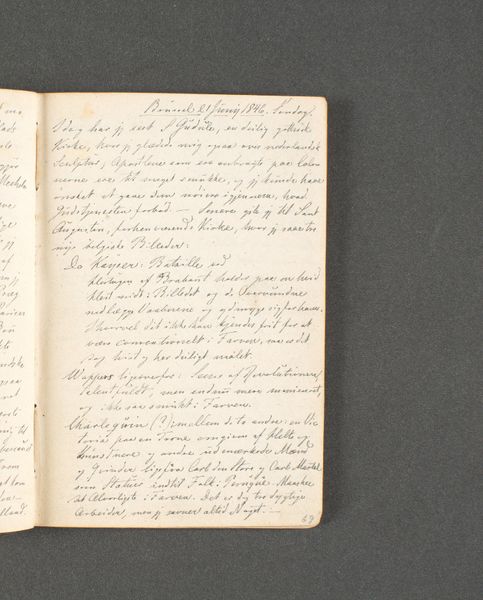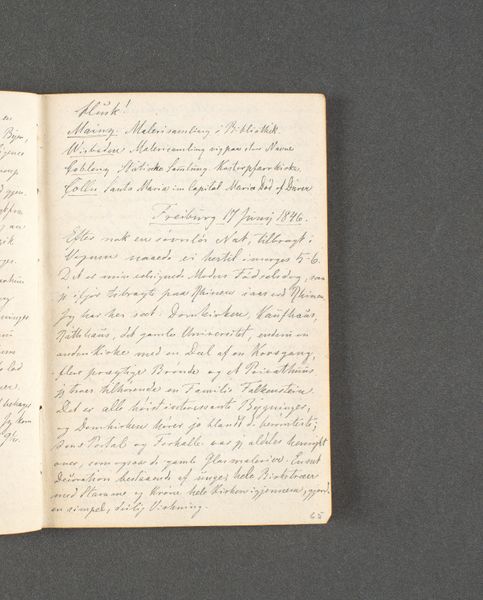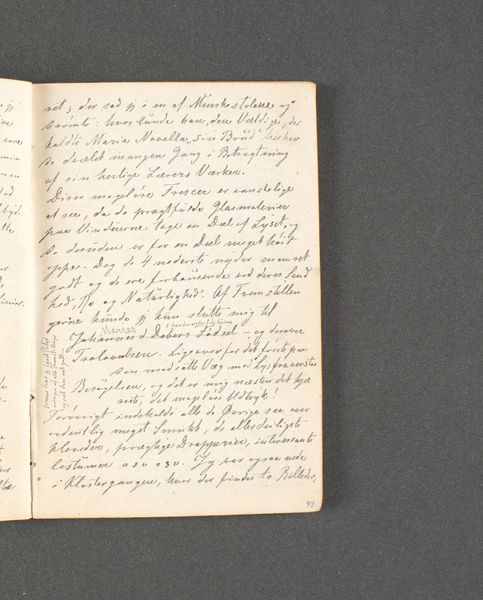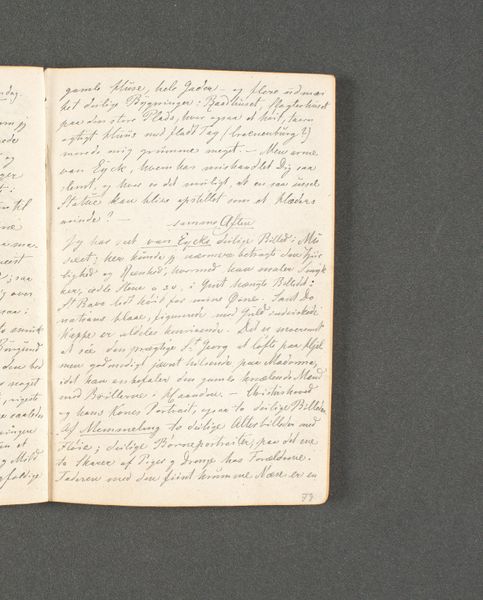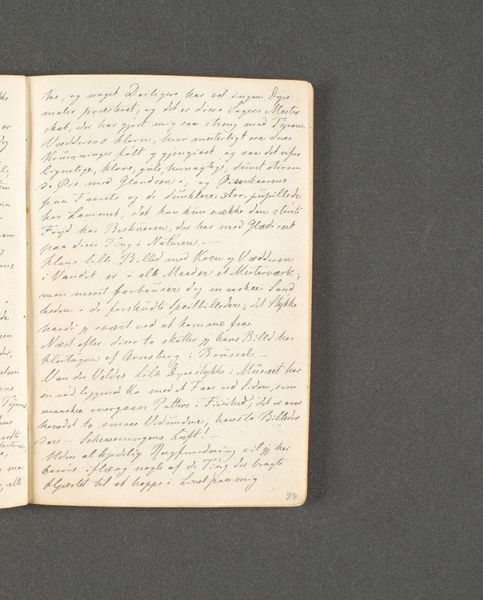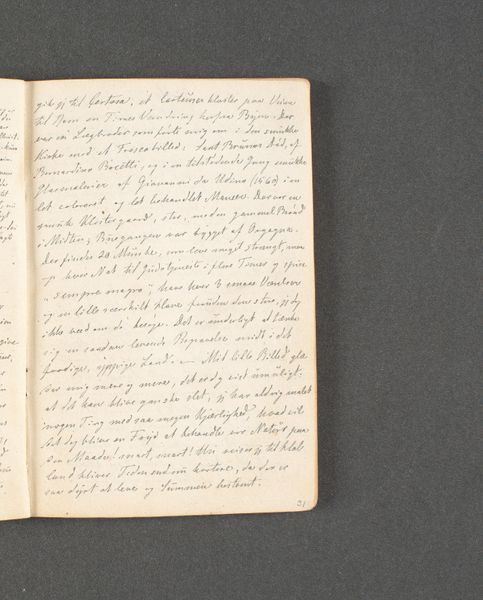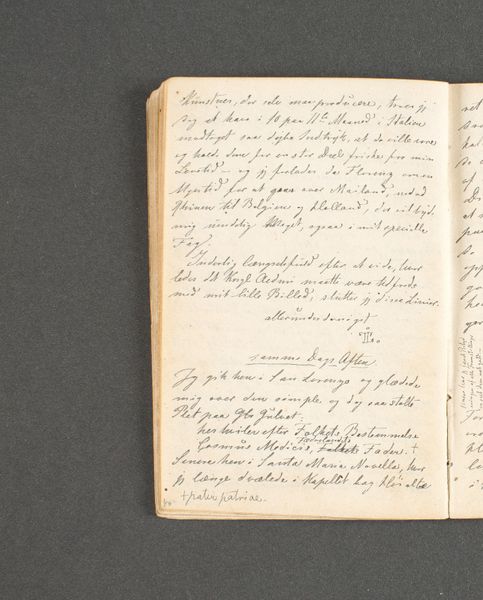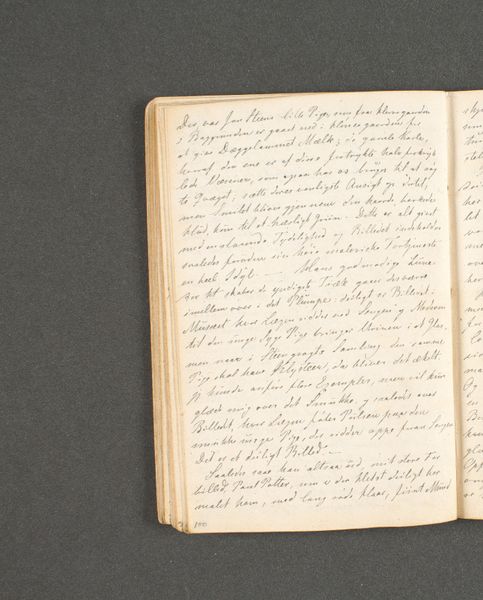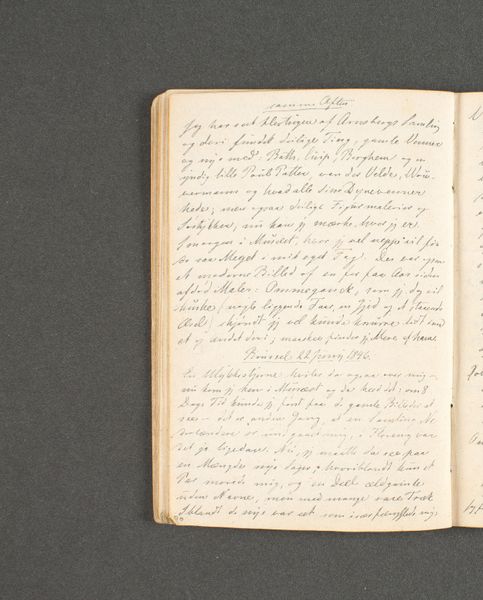
drawing, textile, paper, ink
#
drawing
#
narrative-art
#
textile
#
paper
#
ink
#
journal
#
romanticism
#
sketchbook drawing
#
sketchbook art
#
calligraphy
Dimensions: 131 mm (height) x 89 mm (width) (bladmaal)
Curator: This is a page from Johan Thomas Lundbye's travel journal, dated 1846, titled "Rejsedagbog. Liege (Lüttich) og Bruxelles," created with ink on paper. What's your initial take on it? Editor: It seems less like a formal artwork and more like…personal reflections. I can’t read the language, but the handwriting gives a sense of intimacy, like we're glimpsing a private moment. How do you interpret this work, seeing beyond just the surface? Curator: I see this page as a powerful intersection of travel, identity, and cultural observation in 19th-century Europe. Lundbye's choice of journaling reveals a negotiation between the public act of artistic production and the private processing of experiences. What sociopolitical questions arise when we see an artist documenting his travels? Editor: Hmm…maybe about who gets to travel and record their experiences? It feels like there's an element of privilege there, to be able to travel and have the resources to document it so meticulously. Curator: Precisely! This act wasn’t available to everyone. The Romantic era saw the rise of individualism, but who was included in that "individual?" Consider, too, how his observations contribute to constructing ideas about national and cultural identities – both his own and those he encounters. How might his journey reflect or challenge dominant perspectives of the time? Editor: I guess it makes me think about how travel writing, or travel art like this, can reinforce or dismantle stereotypes about different cultures and places. I’d never really considered it in art before. Curator: Exactly! His observations, filtered through his artistic and cultural lens, can perpetuate existing power dynamics. It’s crucial to consider the politics inherent in representation. Editor: That’s really interesting, looking at something as simple as a travel journal and thinking about its larger social and political context. Thanks for pointing that out! Curator: My pleasure! I am always interested in seeing how the practice of seeing shapes identity and contributes to broader conversations.
Comments
No comments
Be the first to comment and join the conversation on the ultimate creative platform.
